Yes — fractional shares can be traded as a beginner day trader, but being a beginner day trader with fractional shares depends on platform execution, liquidity and the broker’s intraday rules.
This exploration is aimed at non-US residents who want a clear, sensitive guide to whether fractional shares suit someone starting out as a beginner day trader. Fractional shares let small amounts of capital access expensive stocks by buying portions instead of whole units. For short-term intraday activity, fractional lots can work technically, yet they bring unique limits: execution timing, partial-lot liquidity and platform-specific order handling. Readers will find practical steps, a simple checklist, and realistic examples that show how a hypothetical novice trader — call them Maya, a part-time freelancer experimenting with day trading — might test fractional trades without overleveraging. Keep in mind platform rules vary widely; check offerings on regional platforms such as Pocket Option, Quotex and Olymp Trade before attempting intraday trades. Useful reading on account sizing and day-trading readiness is available here: Can I start day trading with $300?, Is $1,000 enough to start day trading?, Can I start day trading with a small account and grow it?, Day trade with less than 25k?, How much money is really needed to start day trading?
How fractional shares work for a beginner day trader and what to expect
Fractional shares divide a whole share into smaller parts so a trader can buy exposure for a fixed dollar amount. For a day trader, that means positions can be sized precisely without waiting to accumulate whole shares. However, execution details matter: some platforms fill fractional orders via internal aggregation or time-weighted allocations, which can affect intraday fills and slippage.
Maya’s scenario: with $200 she places a fractional buy on a high-priced stock at market open. The platform aggregates orders and fills her 0.05 share; when price moves, she must sell back the fractional position—sometimes the platform restricts partial-lot sales or pairs them with internal matching. These rules determine whether day trading fractional shares is practical.
- Key mechanics: fractional orders are often executed in dollar amounts rather than share counts.
- Dividend & voting: proportional dividends usually apply, voting rights depend on the broker’s policy.
- Intraday fills: time-of-day and order routing can cause differences vs whole-share market orders.
| Concept | What it means for a beginner day trader | Concrete example |
|---|---|---|
| Dollar-based orders | Buy/sell by amount simplifies position sizing for small accounts. | $100 buys 0.02 of a $5,000 share; easier to DCA intraday. |
| Execution timing | Fills may be batched or delayed, impacting entry/exit precision. | Market moved 0.5% before fractional order filled — affects profit. |
| Liquidity limits | Some fractional lots can’t be partially sold if platform requires rounding. | Attempting to sell 0.03 share forces sale of full fractional lot. |
Practical limits, platform rules and risk management when day trading fractional shares
Before using fractional shares for intraday trades, review platform-specific rules and test with small trades. Platforms differ on whether fractional shares can be matched intraday, how they allocate partial fills, and whether margin or leverage is permitted on fractional positions. For non-US residents, local regulations and platform offerings play a decisive role.
Maya ran a checklist before scaling intraday fractional trades: platform fill methods, minimum trade size, fees and whether the broker supports scheduled buy/sell orders in fractional amounts. She ran paper trades for two weeks to compare theoretical vs executed results and adjusted her stop and target sizes to reflect execution delays.
- Practical checklist: confirm fractional order fills are available intraday, know minimums and any hidden fees.
- Risk controls: use tight, tested stop-loss rules and avoid leverage on tiny fractional positions.
- Testing: simulate trades or use the demo mode to observe how fills occur in real conditions.
| Best practice | Why it matters | Action for a beginner |
|---|---|---|
| Start with small capital | Limits downside while learning execution quirks. | Use $50–$200 per test trade, monitor fills closely. |
| Know platform order types | Market vs limit affects slippage on fractional fills. | Prefer limit orders for precise intraday entries. |
| Record and review trades | Feedback loop accelerates learning and discipline. | Keep a trade log and summary each week. |
Insight: fractional shares offer strong accessibility, but for beginner day traders the deciding factors are execution precision and platform rules; test first, limit capital exposure, and adapt risk controls to execution realities.
Common questions beginner day traders ask about fractional shares
- Can fractional shares be bought and sold within the same trading day?
Yes, but it depends on the broker’s order handling. Some platforms permit same-day buys and sells of fractional positions, others may aggregate and settle fractional trades in batches, causing timing differences. Always verify intraday execution policy with the platform (for example, check offerings on Pocket Option, Quotex and Olymp Trade).
- Do fractional shares count toward day-trading limits?
Platform-imposed day-trading rules vary by region and provider. Instead of regulatory labels, focus on each broker’s margin and intraday-trade thresholds and whether fractional operations are treated as full-equivalent trades for any pattern rules.
- Are dividends and voting rights affected by fraction ownership?
Dividends are usually paid pro rata based on fractional ownership; voting rights depend on the broker’s policy and may be limited or handled centrally. Confirm the broker’s policy before expecting shareholder privileges.
- Which platforms handle fractional shares for non-US residents?
Platform availability changes quickly. Non-US residents should check regional platforms and the specific offerings of Pocket Option, Quotex and Olymp Trade, and run a small trial to validate real-world fills and fees.
- How much money is needed to begin day trading fractional shares?
Technically, very little — some traders start with under $300 — but practical success requires money for risk management, fees and to absorb occasional slippage. See these resources for account-sizing guidance: start with $300, $1,000 considerations, and real needs for day trading.
With over a decade of experience navigating global financial markets, I specialize in identifying trends and managing risk as a professional trader. My passion for economics drives my daily commitment to staying ahead in this fast-paced industry. Outside of the markets, I enjoy exploring technology like cryptocurrencies and new investment strategies.

